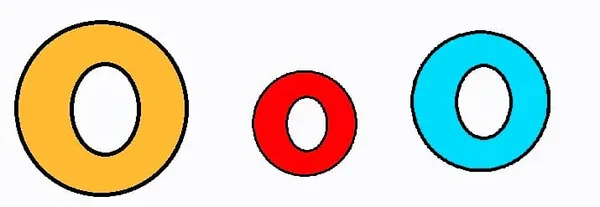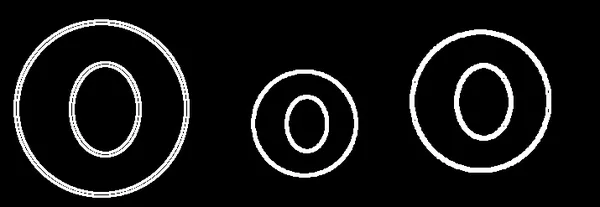Introduction
OpenCV’s contour function is a fundamental feature in computer vision that allows for the detection and analysis of the shapes and boundaries of objects within an image. By defining contours as curves connecting continuous points along a boundary with the same color or intensity, this function enables various applications, from object detection to shape analysis and image segmentation.
Image processing has revolutionized the way visual data is analyzed and understood. The OpenCV library is one of the most powerful tools in real-time computer vision-based applications. This library contains a function called `find Contours` used for image segmentation, shape analysis, and object detection. Let’s dive deep into a detailed explanation of the find Contours function in OpenCV: what is it used for, how does it work, and various means you could apply the above to your projects.


Learning Outcomes
- Understand the concept of contours in image processing and their significance in computer vision.
- Implement the `find Contours` function in OpenCV to detect and analyze object boundaries in images.
- Gain in-depth knowledge of the parameters used in the `find Contours` function and how they affect the contour detection process.
- Explore various practical applications of contours, including object detection, shape analysis, and feature extraction.
This article was published as a part of the Data Science Blogathon.
Table of contents
What is OpenCV?
OpenCV, or Open Source Computer Vision Library, is an important toolkit that provides expansive tools and functionalities for image and videotape processing. It supports a wide range of operations, similar as image recognition, stir shadowing, and point discovery. Among these, figure discovery is a critical operation that allows us to identify and dissect the shapes of objects within an image.
Contours are curves that join all the continuous points along a boundary having the same color or intensity. In simpler terms, contours can be seen as the edges or outlines of objects in an image. They are essential for identifying and working with specific shapes and objects in computer vision tasks.
What are Contours?
Contours are useful in many applications such as object detection, shape analysis, and image segmentation. By detecting contours, you can:
- Identify the boundaries of objects within an image.
- Analyze shapes to determine their properties (e.g., area, perimeter).
- Segment images by separating objects from the background.

As in the above image, the boundary of the object and the shape can be derived by segmenting the objects (bottle and the coin) from the background using the OpenCV contour function.
Why do Contours Matter?
By processing less data, contours make an image simpler while maintaining all of the important details about the shape and structure of the object. They are essential for jobs requiring the localization and identification of objects.
How find Contours Works?
The `find Contours` function in OpenCV is designed to retrieve contours from a binary image. A binary image is a grayscale image where the pixels are either black or white, which makes it easier to distinguish the edges of objects.
Steps to find Contour
- Convert to Grayscale: Convert the image to a grayscale image, which simplifies the processing.
- Apply Thresholding: Convert the grayscale image to a binary image by applying a threshold.
- Detect Contours: Use the `find Contours` function to detect contours in the binary image.
import cv2
import numpy as np
#STEP1
#Converting to Grayscale
image = cv2.imread("Image.jpg", cv2.IMREAD_GRAYSCALE)
#STEP2
# Apply threshold to get a binary image
_, thresh = cv2.threshold(image, 127, 255, cv2.THRESH_BINARY)
# Invert the binary image (black background, white objects)
thresh = cv2.bitwise_not(thresh)
#STEP3
# Detect contours
contours, _ = cv2.findContours(thresh, cv2.RETR_EXTERNAL, cv2.CHAIN_APPROX_SIMPLE)
# Create an empty black image to draw contours on
contour_image = np.zeros_like(image, dtype=np.uint8)
# Draw contours in white color with thickness 2
cv2.drawContours(contour_image, contours, -1, (255, 255, 255), 2)
# Save the contour image
cv2.imwrite('contour.jpg', contour_image)
# Display the contour image (optional)
cv2.imshow('Contours', contour_image)
cv2.waitKey(0)
cv2.destroyAllWindows()
Sample Image of Input and Output of Code
Below is the example image input and output of code:

Parameters of find Contours
The find Contours function has several parameters that influence its behavior and the results it produces. Understanding these parameters is key to effectively using the function.
Key Parameters
- Image: The binary image from which contours are to be found.
- Mode: The contour retrieval mode (e.g., cv2.RETR_EXTERNAL for retrieving only the outer contours).
- Method: The contour approximation method (e.g., cv2.CHAIN_APPROX_SIMPLE for a simple approximation).
Explanation of Modes
- cv2.RETR_EXTERNAL: Retrieves only the external contours.
- cv2.RETR_LIST: Retrieves all the contours without any hierarchical relationships.
- cv2.RETR_CCOMP: Retrieves all the contours and organizes them into two-level hierarchies.
- cv2.RETR_TREE: Retrieves all the contours and reconstructs a full hierarchy of nested contours.
Explanation of Methods
- cv2.CHAIN_APPROX_NONE: Stores all the points of the contour.
- cv2.CHAIN_APPROX_SIMPLE: Removes all redundant points and compresses the contour.
Practical Applications of Contours
Contours play a vital role in the field of computer vision and image processing, providing the foundational elements for numerous advanced image analysis techniques. They help extract meaningful information from images and have a broad range of applications, including object detection, recognition, and shape analysis. In this section, we will explore practical applications of contours, focusing on their significance in various fields and illustrating their uses through relevant examples.
Object Detection and Recognition
Contours play a pivotal role in object detection and recognition by identifying the edges of objects within an image. This is essential for technologies such as:
- Face Detection: Used in security systems and smartphones to identify and recognize faces.
- Handwritten Character Recognition: Converts handwritten text into digital format for applications like postal services and digital note-taking.
- Object Identification in Complex Scenes: Vital for autonomous vehicles and robotics to recognize and navigate through different objects.
Shape Analysis
Contours facilitate the analysis and measurement of shapes, which is critical in various domains:
- Biological Research: Analyzes the shapes of organisms, such as plant leaves and animal cells, to classify and study them.
- Medical Imaging: Helps in delineating anatomical structures in medical scans to diagnose and plan treatments.
- Quality Control in Manufacturing: Ensures that products meet specified shape and size criteria, identifying any defects or deviations.
Feature Extraction and Object Classification
Use contours to extract features and classify objects based on their shape:
- Feature Extraction: Identifies key points and segments along an object’s contour to describe its characteristics.
- Shape Descriptors: Provides quantitative measures such as area and perimeter to compare and classify different shapes and objects.
Pattern Recognition and Matching
Contours aid in recognizing and matching patterns within or across images:
- Template Matching: Compares shapes in images to a template, used in industrial automation for sorting and identifying objects.
- Gesture Recognition: Detects hand shapes and movements, enabling interaction with devices through gesture-based controls.
Conclusion
The Contours in OpenCV is an essential tool for anyone working in image processing. It provides a simple yet powerful way to detect and analyze the shapes and boundaries of objects within an image. Whether you’re working on object detection, shape analysis, or image segmentation, understanding how to use contours effectively will greatly enhance your capabilities in these areas.
By mastering the use of contours and exploring advanced techniques, one can tackle a wide range of complex image processing tasks, making your applications more robust and effective. As we continue to experiment and explore, we’ll find even more creative ways to leverage contours in projects.
Key Takeaways
- Understanding how Contours identify object shapes and boundaries in images for analysis
- Implementing `find Contours` to simplify image data by detecting contours in images.
- Learning in-depth about parameters of `find Contours` .
- Exploring Practical Applications of Contours and its use in the real world.
Frequently Asked Questions
findContours function in OpenCV? A. The findContours function detects and retrieves contours from a binary image, helping identify object boundaries.
A. Contours are curves that connect continuous points along the boundary of an object with the same color or intensity, representing object edges.
findContours? A. Key parameters include the image (binary), mode (contour retrieval mode), and method (contour approximation method).
The media shown in this article is not owned by Analytics Vidhya and is used at the Author’s discretion.


Such an informative blog!
Great article!! Clear and very insightful. Helped me a lot to gain more knowledge about this topic. Looking forward to reading more of them.
Great content !